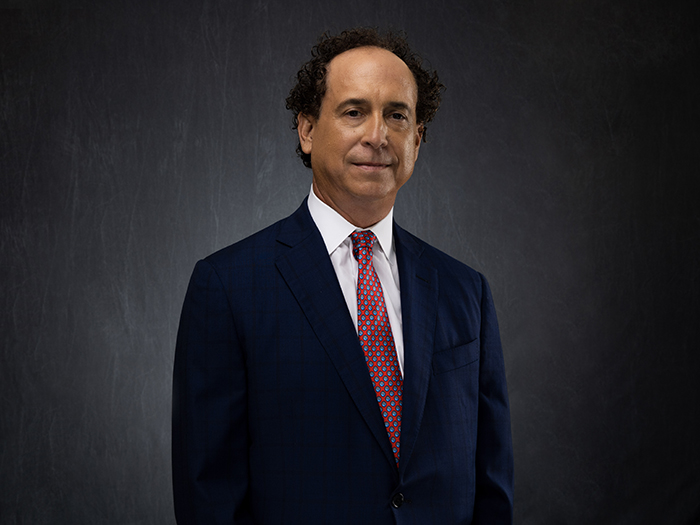Now More Than Ever, Employers Must Ensure the Mental Wellbeing of Employees. Here’s How

If there’s one lesson to take away from the COVID-19 pandemic, it’s that nothing will ever be the same again.
This goes for almost every aspect of our lives, but it’s especially true of our workplaces — how we function and how we communicate with our colleagues and superiors. Much of the change is due to the now-popular work-from-home setups or hybrid models in which employers don’t always spend face-to-face time with their employees.
Prioritizing a culture of wellbeing is paramount for workforces as they continue to navigate what the pandemic has left us.
A session at this year’s National Comp conference provided attendees the opportunity to learn about the benefits of putting employee wellness into the spotlight.
Entitled “Building and Maintaining a Culture Centered on Employee Wellbeing,” the session was presented by speakers Silvia Sacalis, BS, PharmD, vice president of clinical services for Healthesystems; and Ceil Jung, RN, BSN, CCM, director of medical services for SFM Mutual Insurance Company.
How Did We Get Here?
A workplace culture that centers itself around boosting the wellbeing of its employees has never been more vital: Workforces across the country and the globe are experiencing a series of hurdles following the pandemic.
Perhaps the most damaging impact on workforces was the departure of droves of workers who relinquished their posts in what was famously dubbed “the Great Resignation.” In addition, employers are now feeling the effects of the Great Reshuffle, in which an “estimated … 30% of employees were considering switching their jobs,” according to one source cited by Jung.
And, according to the Bureau of Labor Statistics, 4.3 million U.S. workers quit their jobs in May of 2022.
What is causing waves of employees to leave their workforces, as we’ve recently witnessed? For starters, COVID-19 produced a slew of workforce impacts on its own, including staffing challenges, loss of experienced workers, burnout and loss of connectedness. Employees are experiencing a decrease in both their physical and mental wellbeing.
The loss of experienced workers is a particularly interesting stressor for those employees still with the organization. Sacalis said that the loss of these employees is “placing significant stress on the training of new employees and recruitment of workers.” The stress is also amplified for those employees who are caught in the crossfire of their resigning colleagues.
“You cannot forget the existing and current employees within your organization that are left behind to support organizational priorities and strategies,” Sacalis said.
In addition, employees want to feel that their superiors value their contributions and that they are being properly compensated.
“There are some significant gaps between employer perceptions and employee perceptions,” Sacalis said. “Post-pandemic, employees now value a stronger work-life balance, as well as a richer benefits package and higher salaries.”
Finally, Sacalis noted that a loss of connectedness has played a significant role in the Great Resignation and Great Reshuffle. Many organizations are morphing their in-person workforces to remote or hybrid models, but human connection remains a vital part of a successful, healthy workforce. It’s an imperative component of creating a culture of wellbeing.
“In these new [work] environments, leadership at all levels within organizations [can] play a significant role to ensure that we embrace the culture of wellbeing, [as well as] supporting and bridging the gaps [that we’ve identified],” Sacalis said.
Depression, Anxiety and Burnout
The session also touched on mental health issues that employees may experience and why employers should pay attention.
Not only was there increased use of antidepressant medications and alcohol throughout the pandemic, but the increase in employee mental health struggles contributed to more than 200 million lost workdays, according to a study from the CDC.
Additionally, 40% of employees who left or switched jobs cited burnout as the main contributor for leaving their job, according to the Limeade Employee Care Report.
Jung emphasized the role employers and supervisors can play in “encouraging early detection of depression or other mental health conditions.”
She continued: “[Employers] want to make sure that [they are] improving access to care, showing compassion and acknowledging stressors that lead to mental illness in the workplace.”
The statistics mentioned in the session emphasize the reality that, for organizations to foster a culture that effectively supports the wellbeing of employees, both physical and mental stressors need to be readily addressed.
A Culture of Employee Wellbeing
The culture of an organization should not be underestimated when looking to retain its workforce. And, due to the aforementioned considerations that have forced workplaces to evolve, company culture must evolve with them.
Employees’ priorities have shifted in part due to what the session dubbed “generational nuances.”
“We now need to consider that we have five generations in our workplace, and they have very different priorities, values and perceptions,” Jung said.
While individual circumstances and preferences certainly come into play, there are some larger generational trends to consider. For example, older generations such as the traditionalists and Baby Boomers tend to prioritize loyalty to an organization as a whole, while generations of millennials and Gen Zs place a high value on their careers and their overall trajectory. Because of this, many younger members of the workforce don’t expect to stay with their companies long-term, thus adding another motivation for employers to focus on a strong company culture.
An optimal place for employers to start is by surveying their employees on what they consider the most important components to include in a company culture. Jung also noted that creating a committee, rather than having management make decisions on what would be prioritized, could prove to be a better avenue to take.
Ensuring that organizations have a strong benefits package is also key, as many employees prioritize much more than their salary. Simply providing health insurance and 401k plans is no longer going to cut it.
Incorporating components such as a robust retirement plan and mental health benefits like EAP programs and mental health apps will not only ensure a better work environment for employees but also assist employers in attracting and retaining employees.
“That is a first clue [for potential employees] on how the work culture is and if the employer cares about you,” Jung said.
Flexibility may be one of the most important factors that an employer should consider when fostering a healthy workplace culture, especially in this time of remote and hybrid work.
“Work-life balance is crucial within your organization,” Sacalis said. “Try to understand your employees’ needs and recognize that there’s differences [from employee to employee].”
Differences between employees vary based on individual circumstances including those who have to care for children, or elderly/ill family members, to those who may or may not have support systems at home
“Flexibility is important,” Sacalis said.
Ultimately, creating and maintaining a company culture that centers on wellbeing boils down to a very simple concept: remembering that employees are human beings.
“Be deliberate, transparent and consistent in your communication with your employees,” Sacalis said.
“And don’t forget to lead with compassion.” &












